Rare! Original 1967 Apollo Program "Command Module (CM) Interior" 1st Edition NASA Astronaut Training Document*
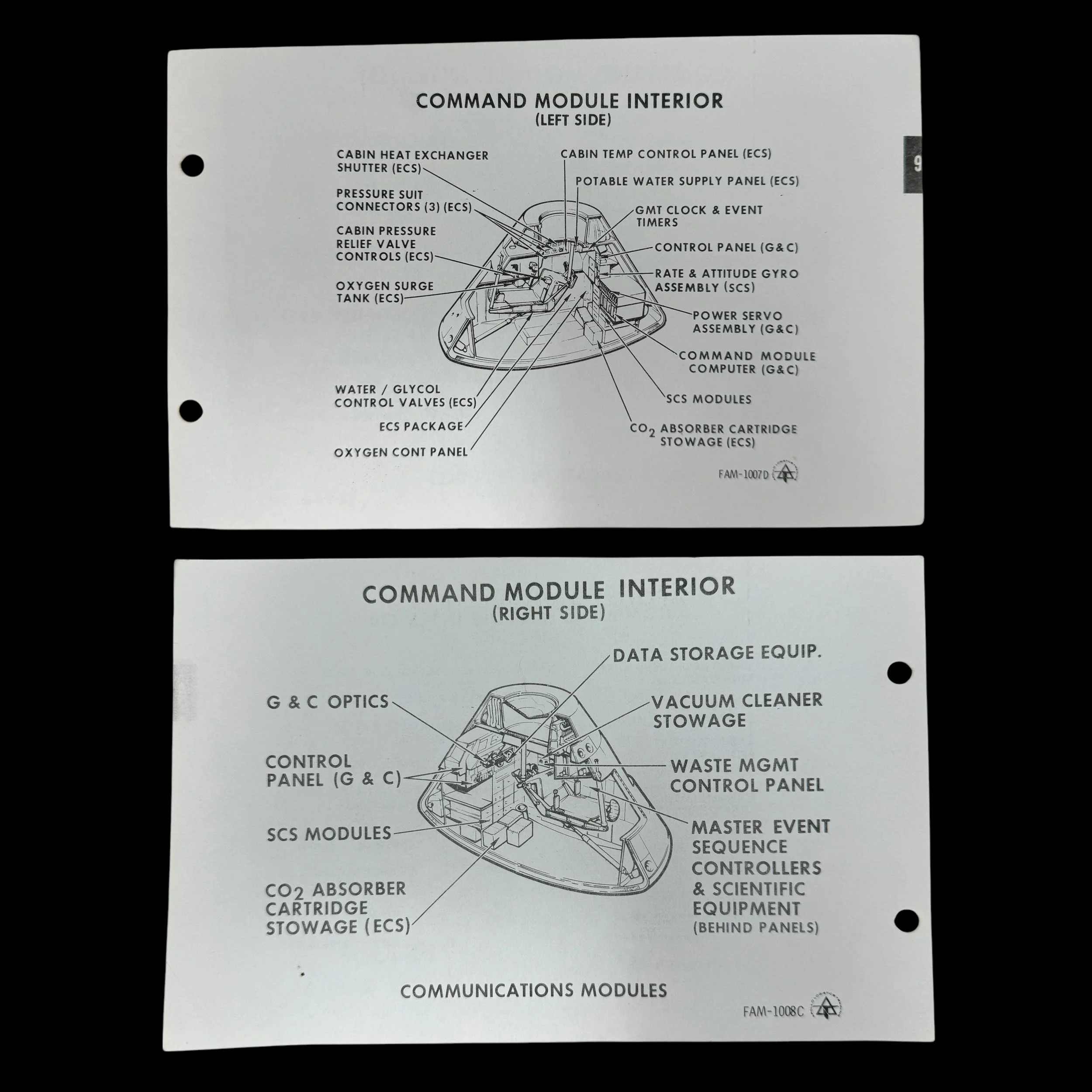
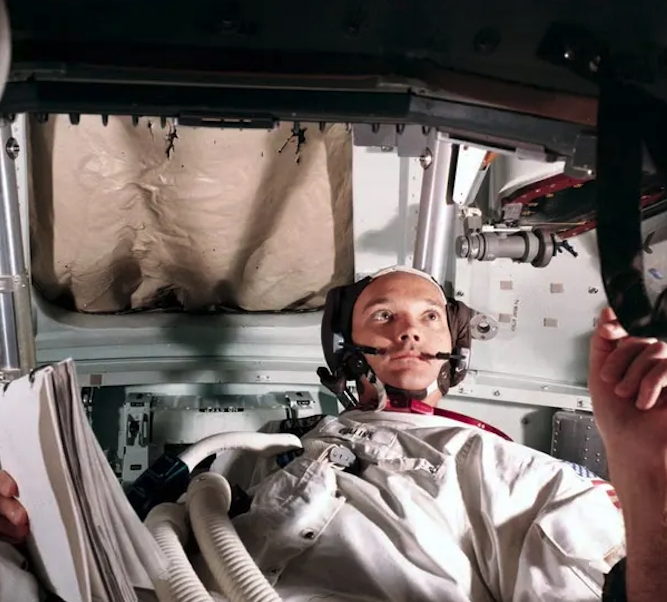
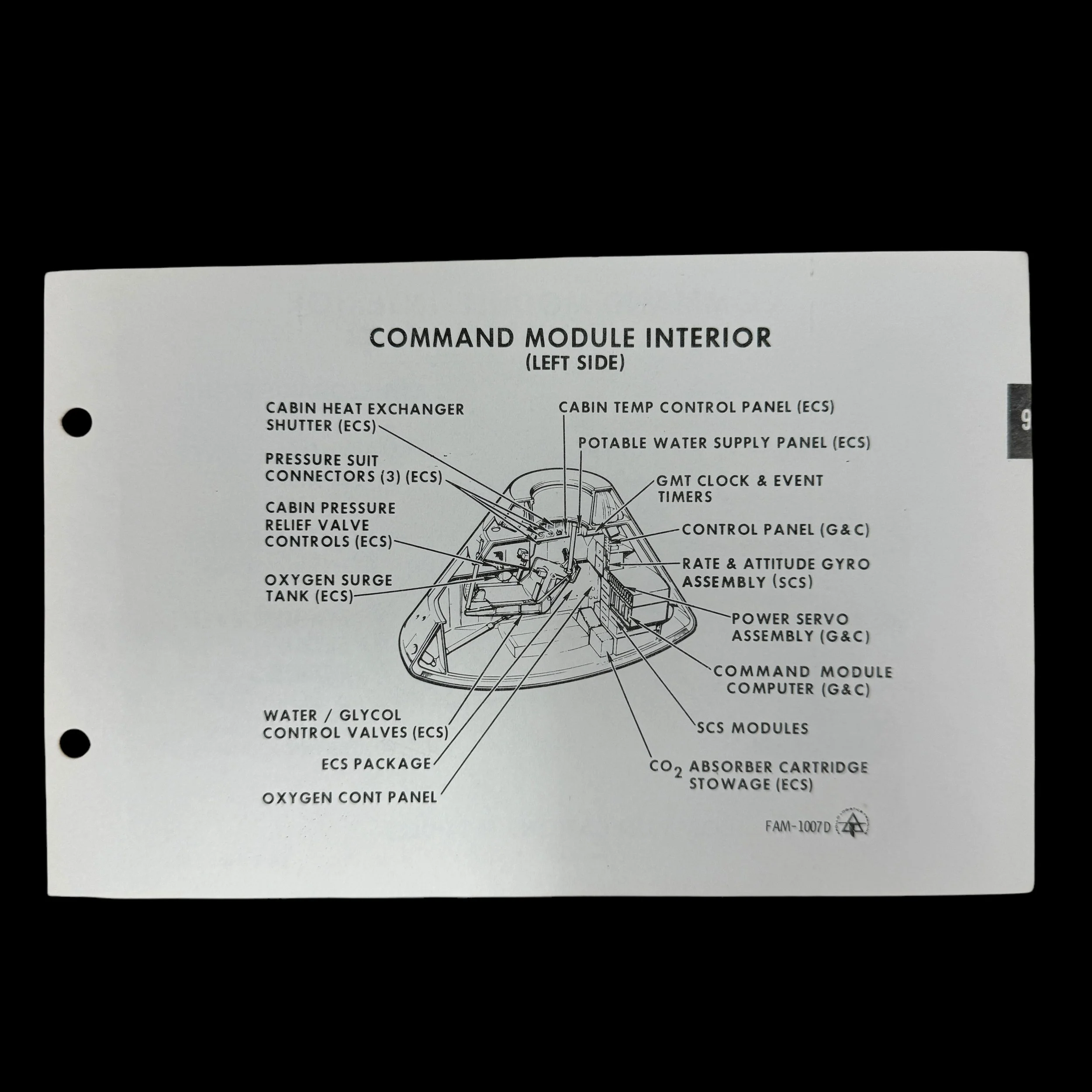


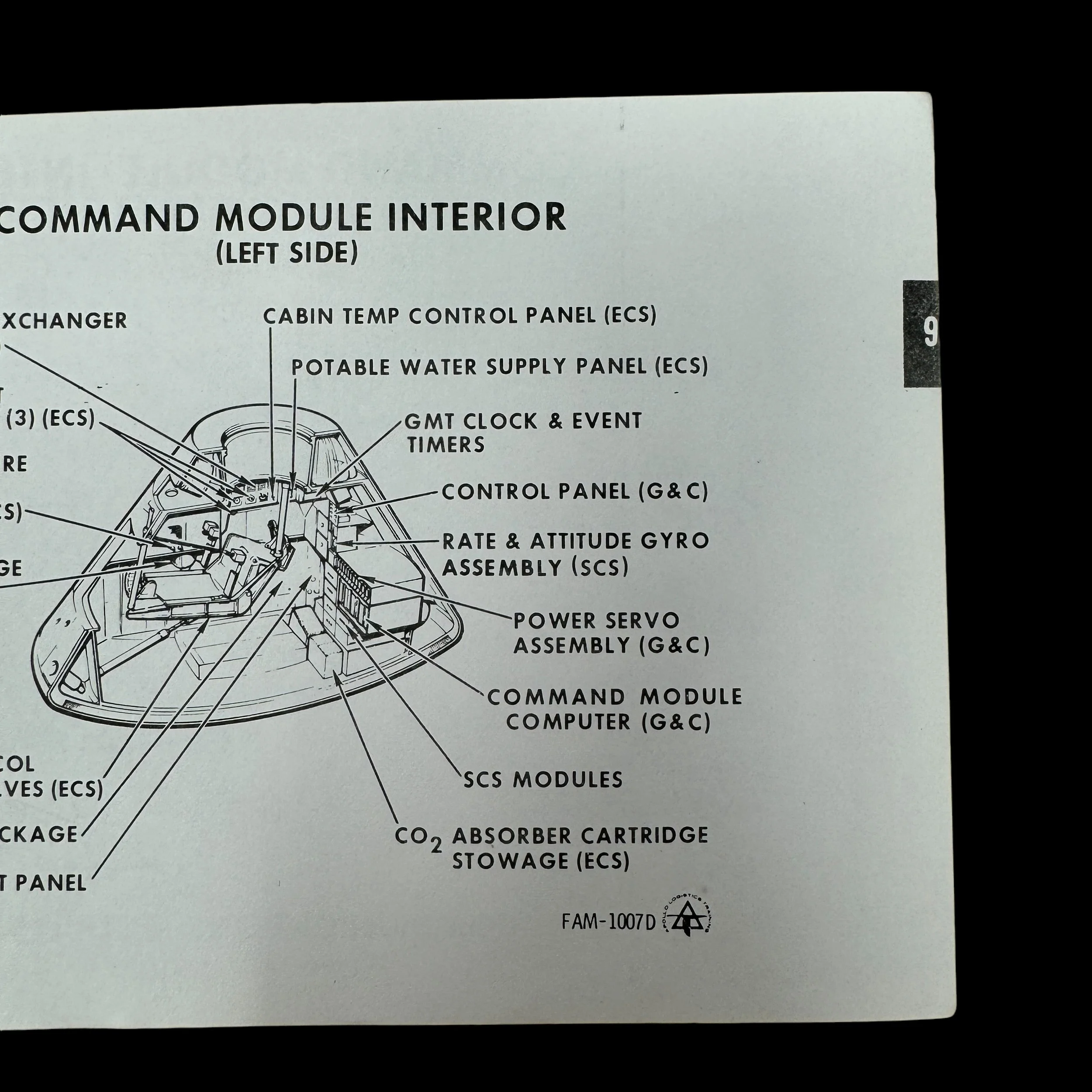
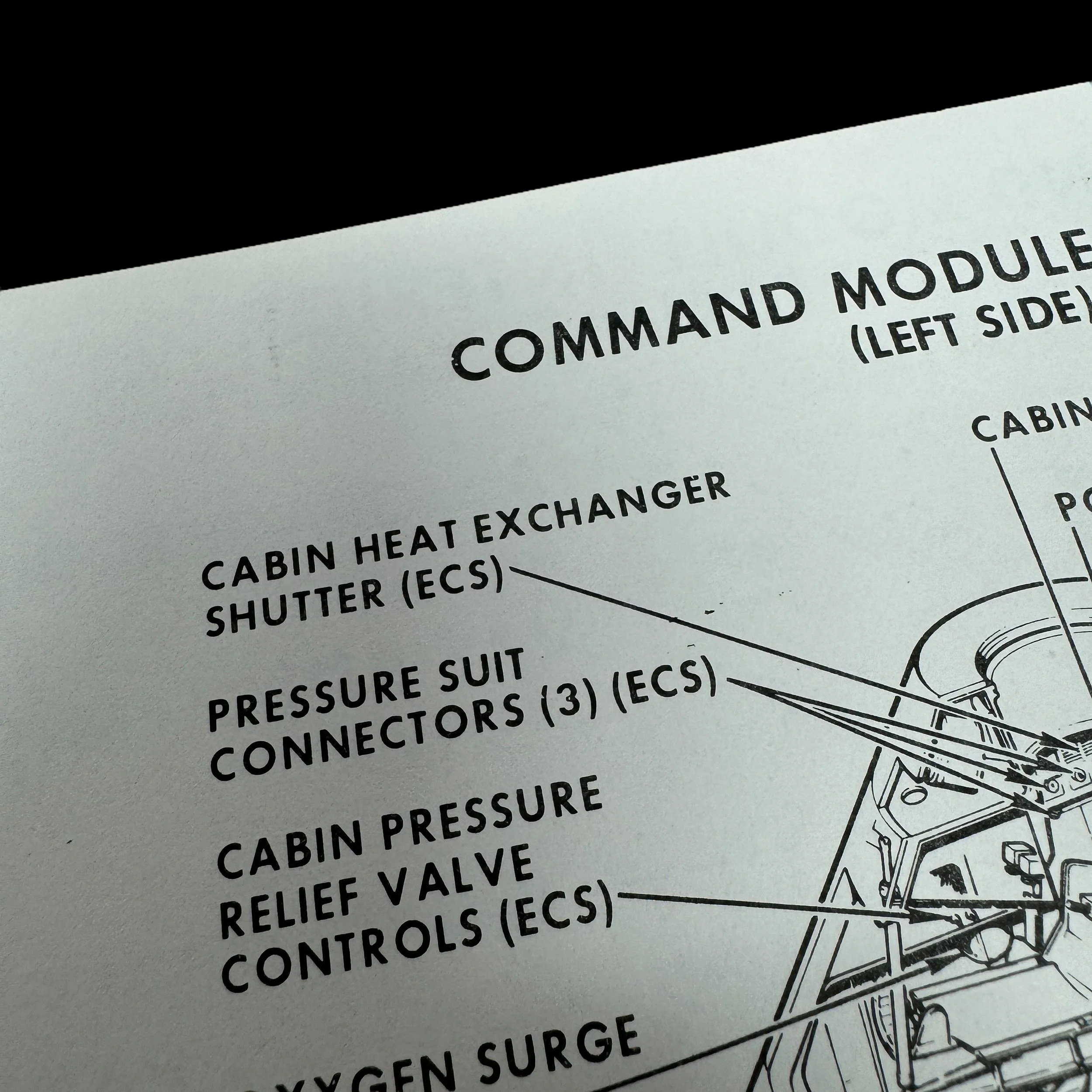
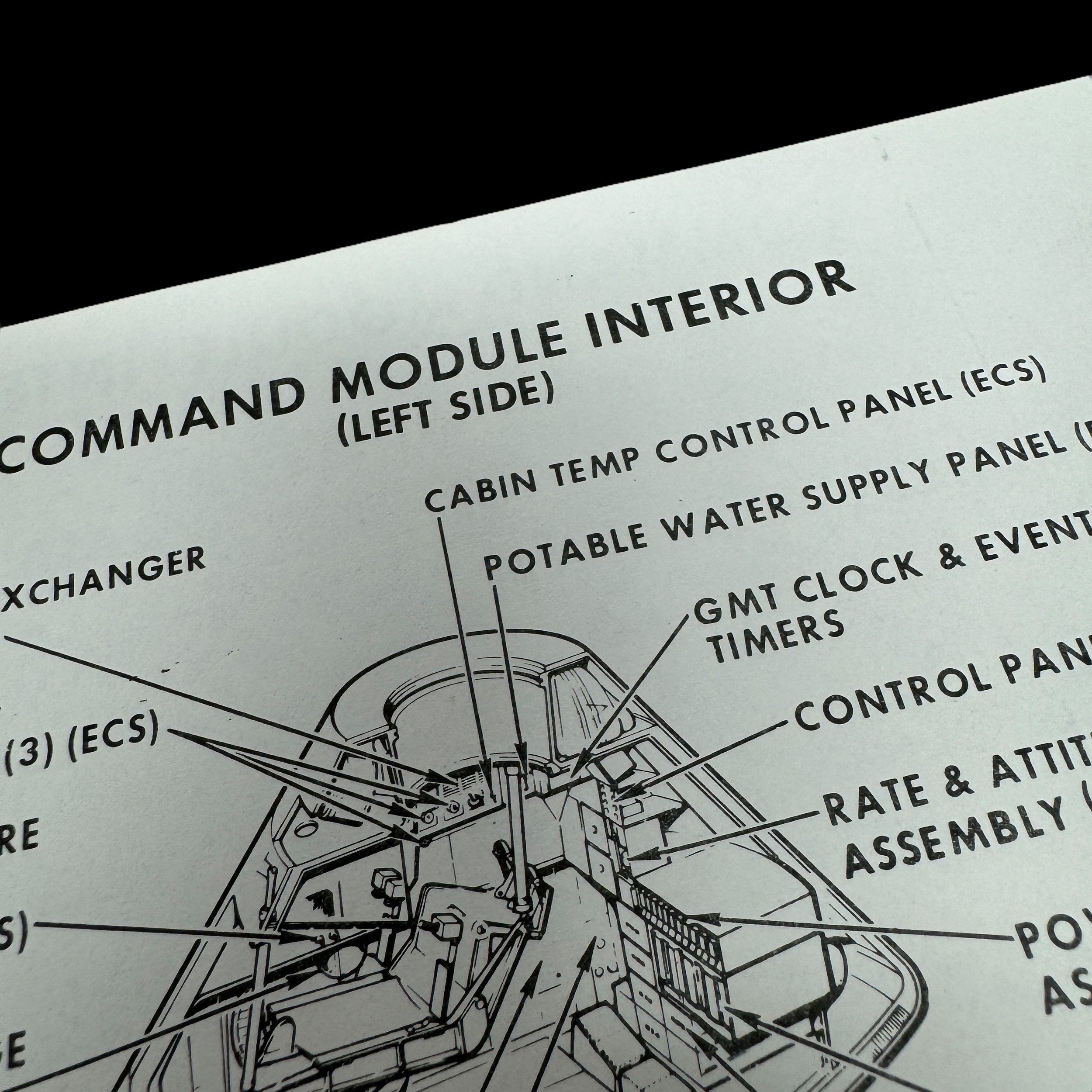
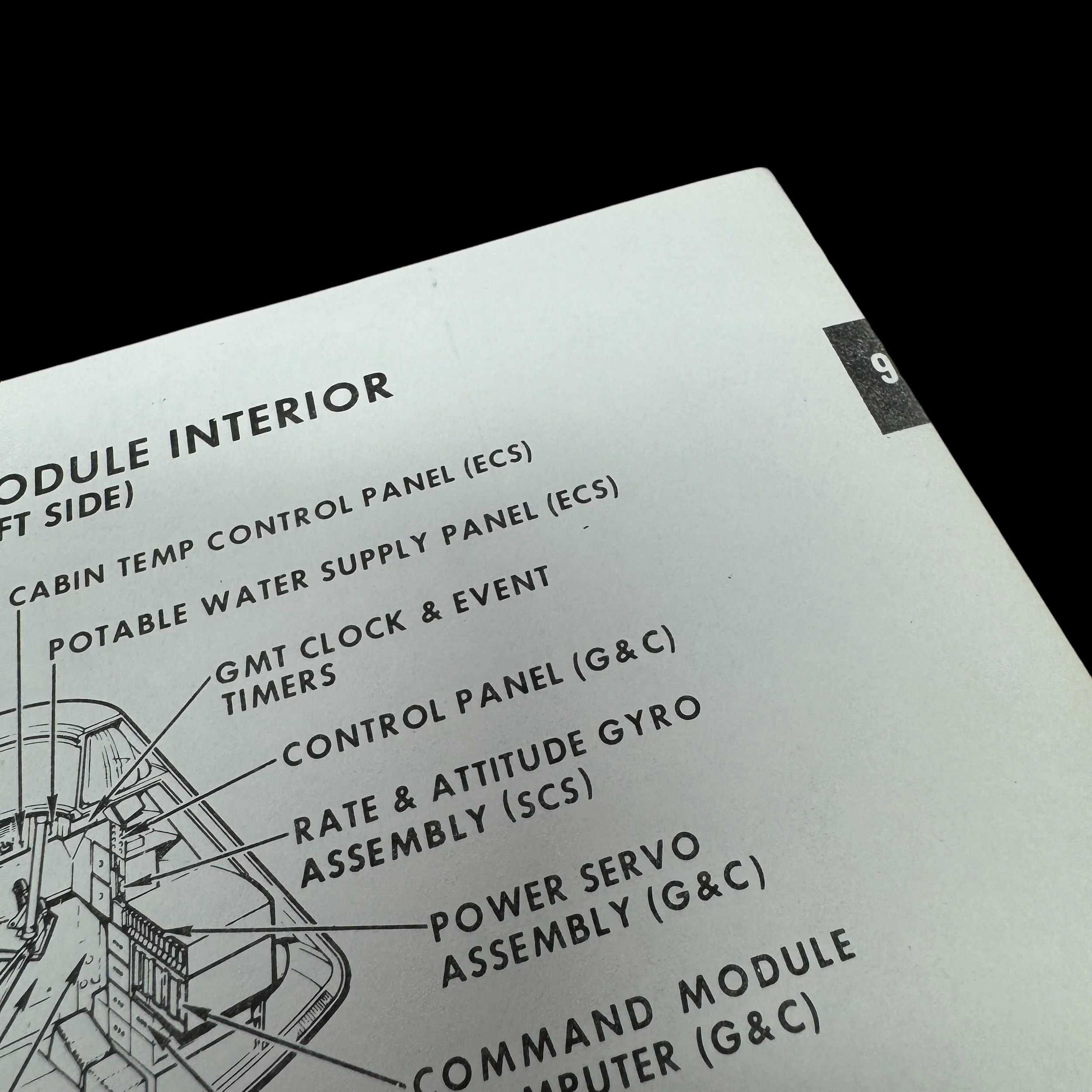
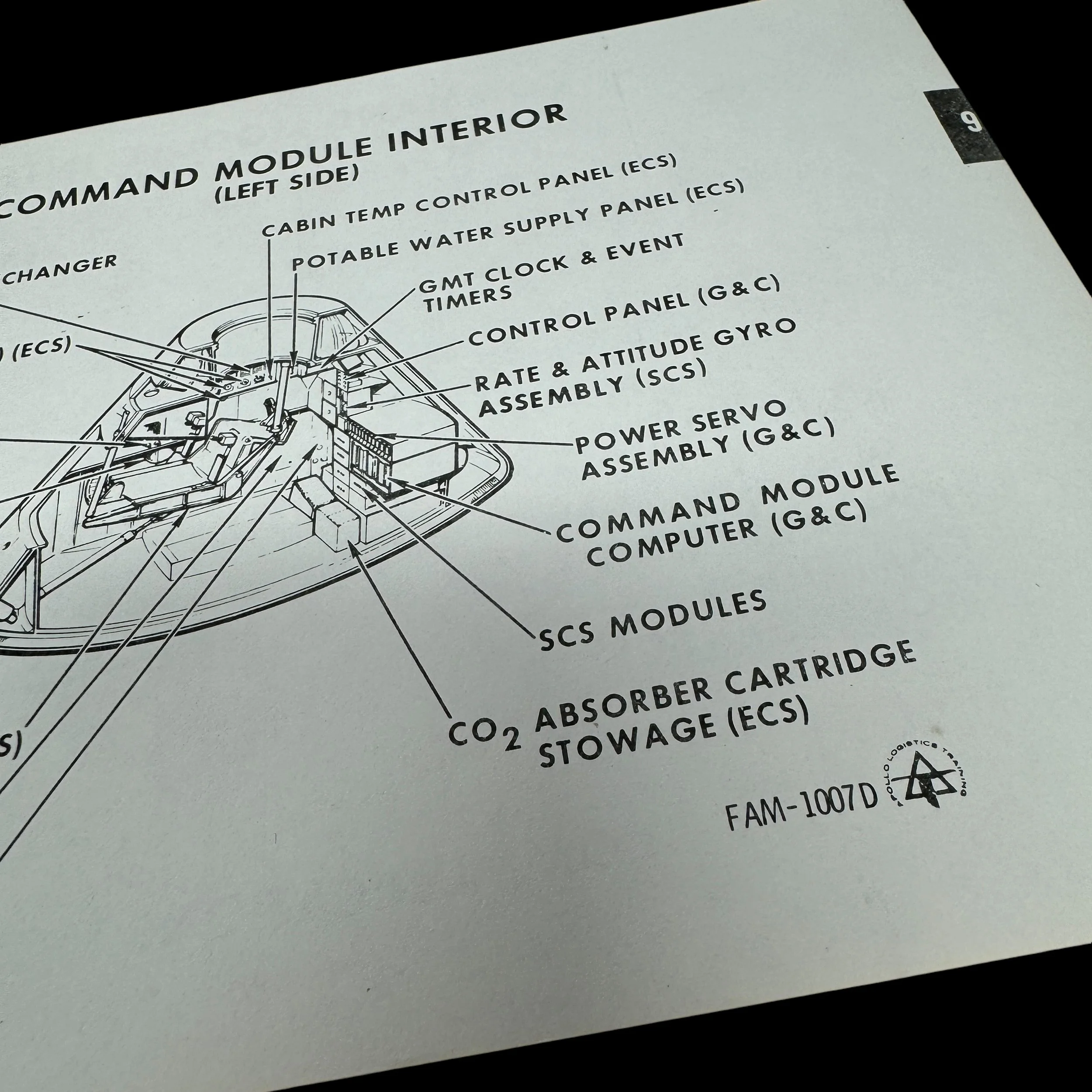
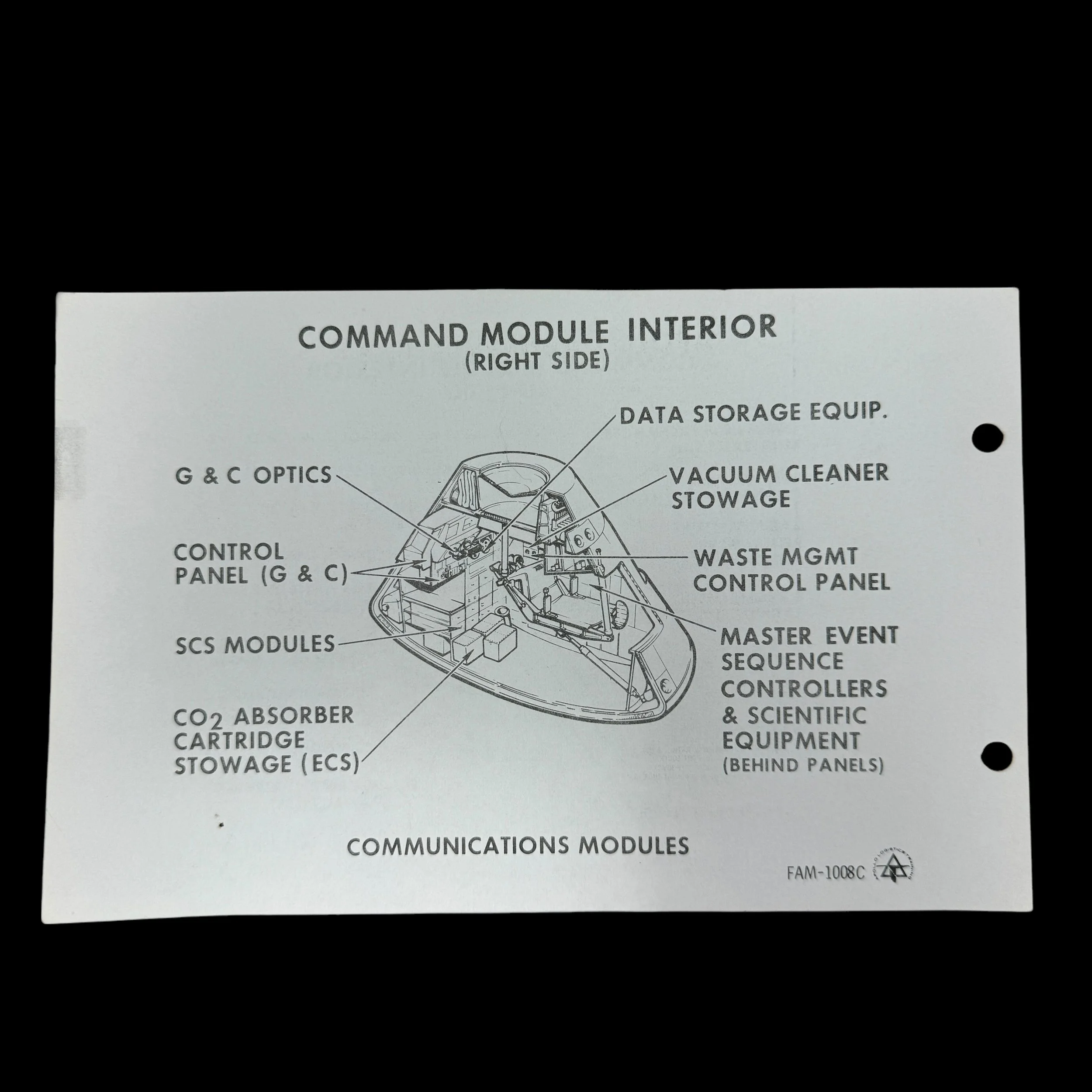
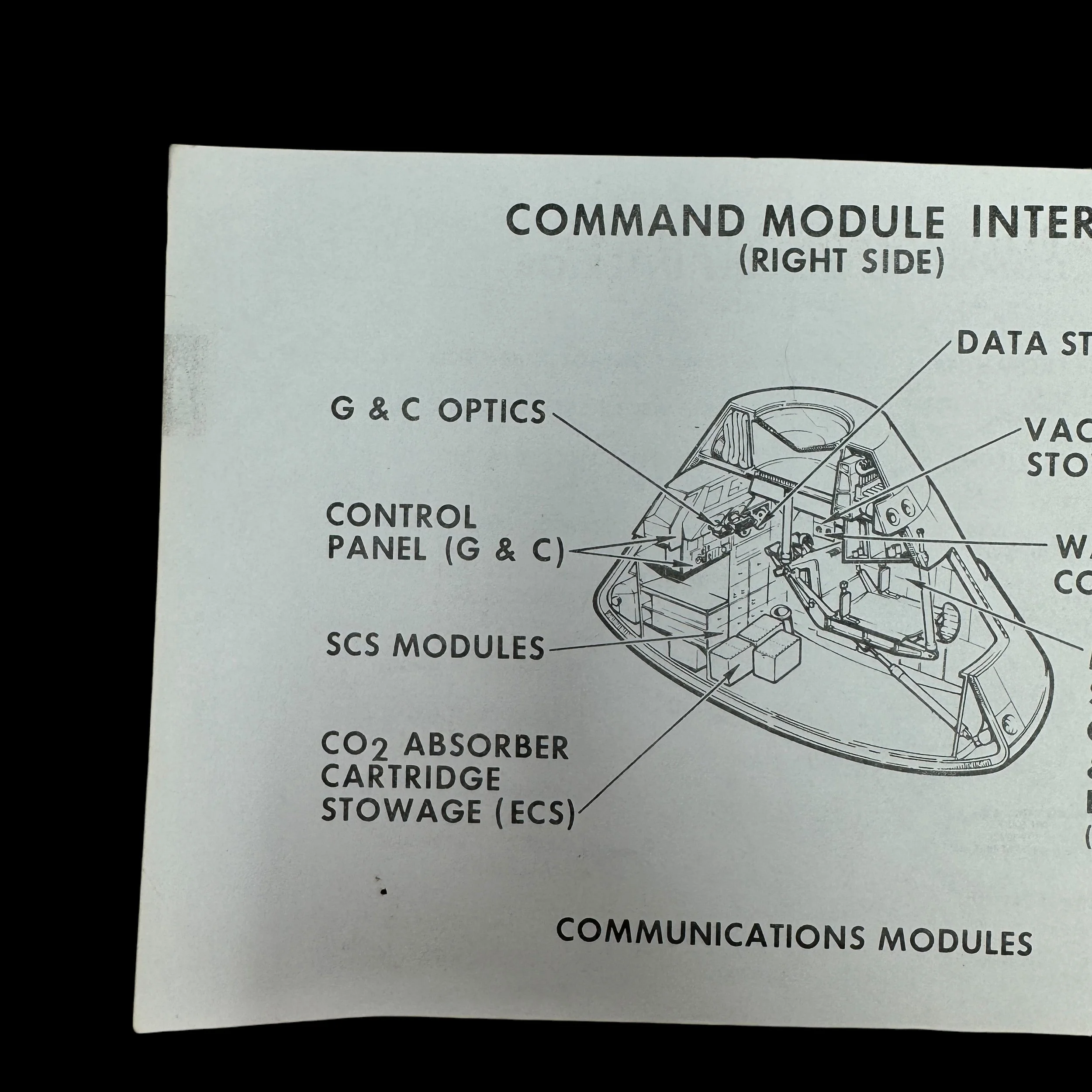
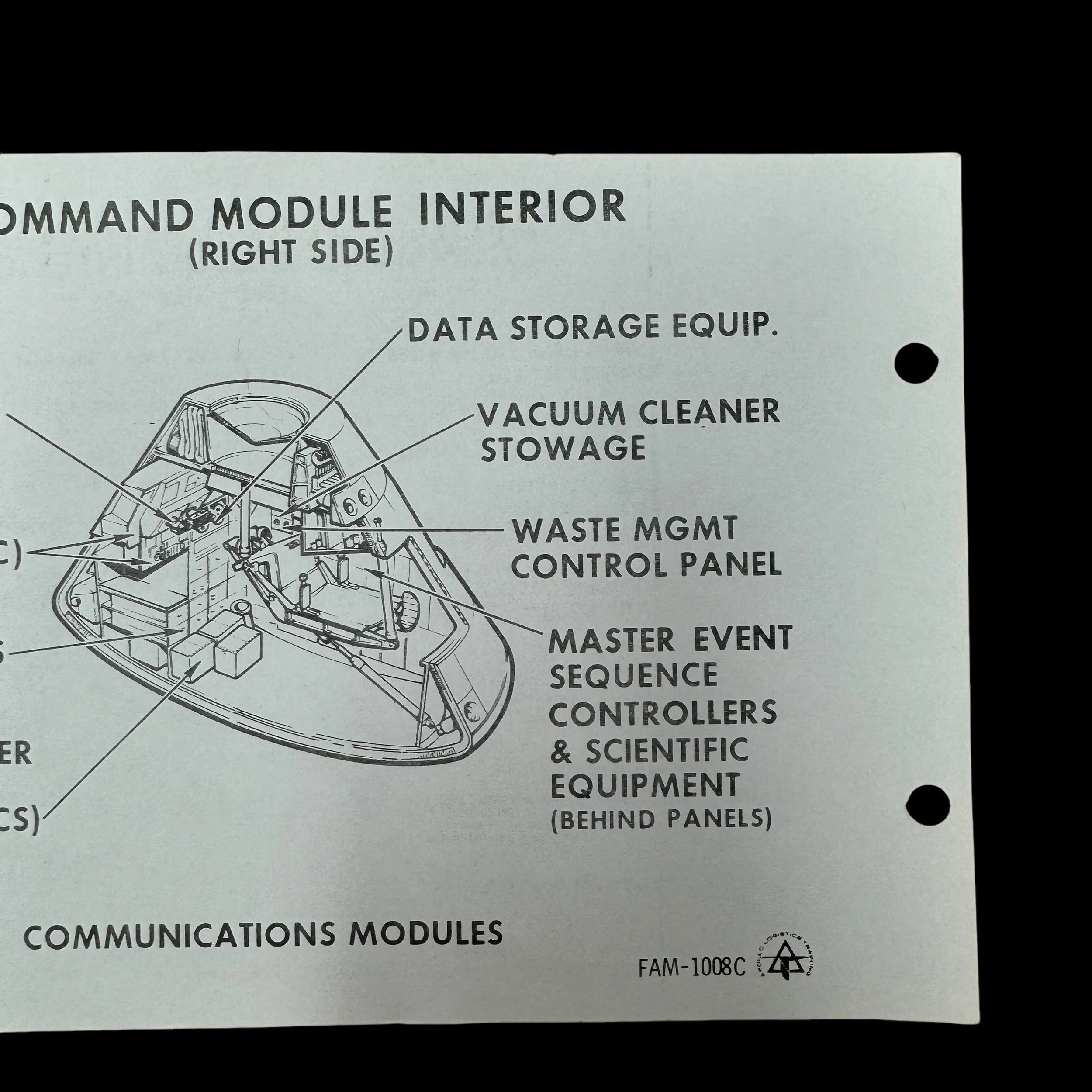



Rare! Original 1967 Apollo Program "Command Module (CM) Interior" 1st Edition NASA Astronaut Training Document*
Comes with a hand-signed C.O.A. and a full historical research write-up
Size: 5.5 x 8.5 inches
From: Apollo Program (NASA) - Command Module (CM) Interior
Dated: 1967
This extraordinary and highly sought-after piece of space history is an original, double-sided Apollo Program astronaut training document produced by NASA in 1967. Used by legendary U.S. Apollo astronauts, this document was a crucial tool for studying and mastering the operations and equipment the Apollo astronauts would rely on during their historic Apollo missions.
As a 1st edition Apollo astronaut training resource, this document played a pivotal role in preparing some of the most iconic figures in space exploration, including Neil Armstrong, Buzz Aldrin, Michael Collins, Frank Borman, and James Lovell, among others. It marks a key moment in NASA's journey, as the Apollo program was at the heart of humanity's mission to land on the Moon.
This document was made by NASA just prior to the landmark mission of Apollo 7, the first crewed test flight of the Command and Service Module in Earth orbit, which set the stage for the incredible achievements that followed. Apollo 8 soon made history by orbiting the Moon, with astronauts Frank Borman, James Lovell, and William Anders aboard, paving the way for the ultimate success of the Apollo program.
In 1969, the Apollo program reached its zenith with Apollo 11, when Neil Armstrong and Buzz Aldrin made their historic lunar landing, while Michael Collins commanded the orbiting spacecraft above. This success was followed by additional lunar explorations with Apollo 12, 14, and later missions, featuring astronauts like Charles Conrad, Alan Bean, Alan Shepard, and Edgar Mitchell—heroes who further cemented NASA's legacy in space exploration.
This is a once-in-a-lifetime opportunity to own a genuine artifact from NASA's Apollo Program, directly connected to the training of astronauts who participated in missions from Apollo 7 through Apollo 14. A rare and invaluable piece of space history, it represents the dedication, courage, and groundbreaking achievements of the Apollo astronauts as they ventured beyond our world and into the unknown.
The Apollo Command Module Interior Systems: Left and Right-Side Overview
The Apollo Command Module (CM) was the centerpiece of the Apollo Program, designed as a sophisticated spacecraft to carry astronauts to the Moon and safely back to Earth. Its importance lay not only in its role as the living and working quarters for the astronauts during the mission but also as the command center for all operations. The CM's internal systems, particularly those located on the left and right sides, played crucial roles in mission operations, astronaut control, and safety. These systems were meticulously designed to ensure functionality, safety, and ease of use in the hostile environment of space.
1. Overview of the Command Module Interior
The Apollo Command Module was divided into several areas, including a central control panel, astronaut seating, and equipment storage areas. The CM was equipped with advanced avionics, navigation systems, environmental control systems, communication tools, and life support mechanisms. The interior was designed to be as compact and efficient as possible, given the limited space available for three astronauts.
The control panel, which spanned the width of the module, was the most critical part of the CM’s interior. It was divided into various sections based on functionality, with key systems and instruments placed on the left and right sides of the astronauts. Each astronaut had specific roles and responsibilities, and the positioning of systems on the left and right was designed to accommodate these roles.
2. Left-Side Systems
The left side of the Command Module housed many of the systems related to navigation, guidance, and environmental control. The astronaut seated on the left, typically the commander, was responsible for piloting and major mission controls. The following systems were crucial components found on the left side:
2.1. Guidance and Navigation (G&N) System
The Guidance and Navigation system was one of the most critical systems located on the left side. This included the Primary Guidance, Navigation, and Control System (PGNCS), often called the “pings” (PGNS). It was responsible for navigation during various mission phases, including translunar injection (TLI), lunar orbit, and the return journey to Earth.
Inertial Measurement Unit (IMU): This gyroscopic system tracked the spacecraft's position and orientation in space. The IMU provided feedback to the guidance computer about the spacecraft’s movement in three axes.
Optics System: A sextant and telescope allowed the crew to manually verify their position by sighting stars and other celestial objects. This system was essential for backup navigation in case of a computer failure.
2.2. Environmental Control System (ECS)
On the left side, several controls related to the Environmental Control System (ECS) could be found. The ECS was responsible for maintaining a livable environment within the Command Module. Key components included:
Oxygen Supply: Oxygen tanks were located outside the CM, but controls for regulating oxygen flow into the cabin and suits were located inside. These controls allowed astronauts to adjust the pressure and flow rates.
CO₂ Scrubbing: The spacecraft had a system to scrub carbon dioxide from the air. Controls for monitoring and managing CO₂ levels were also located here.
Temperature and Humidity Controls: The ECS maintained the internal temperature and humidity levels. Temperature control was crucial as the external environment in space fluctuated between extremes of hot and cold.
2.3. Communication Systems
The left-side interior also housed part of the communication systems. The Apollo CM was equipped with multiple communication tools, including the S-band transceiver and VHF communications system. These systems allowed astronauts to communicate with mission control on Earth as well as with the Lunar Module during lunar operations.
Voice Communications Panel: This panel controlled communication frequencies and volumes. Astronauts could switch between different communication systems depending on whether they were talking to Earth, the Lunar Module, or other systems.
3. Right-Side Systems
The right side of the Apollo Command Module was dedicated to system monitoring, electrical controls, and displays related to propulsion and power management. The astronaut seated on the right, often the Command Module Pilot, had a significant role in overseeing the spacecraft's electrical and propulsion systems. Key systems on this side included:
3.1. Electrical Power System (EPS)
The Electrical Power System was essential for supplying power to all systems within the Command Module. The Apollo CM was equipped with fuel cells that converted hydrogen and oxygen into electricity and water, supplying the spacecraft with the necessary power for its systems. The controls for managing and monitoring power distribution were on the right side.
Fuel Cell Status Indicators: The astronauts monitored the status of the fuel cells through indicators on the right side. These panels displayed information about voltage levels, fuel consumption, and overall power output.
Battery Backup Systems: In case of fuel cell failure, batteries served as a backup. These battery systems could power the CM long enough to ensure the safe return of the crew.
3.2. Reaction Control System (RCS)
The Reaction Control System was responsible for controlling the orientation of the Command Module in space, a function known as attitude control. Small thrusters located around the spacecraft provided the necessary thrust to adjust its orientation. The controls for this system were located on the right side.
RCS Thruster Controls: The astronaut on the right would manage the orientation by controlling the RCS thrusters. This system was crucial during docking maneuvers with the Lunar Module and during re-entry into Earth’s atmosphere.
3.3. Display and Monitoring Systems
Several display systems on the right side allowed astronauts to monitor the overall health of the spacecraft, including the performance of propulsion and power systems.
Telemetry and Diagnostics Panel: This panel displayed real-time data regarding the spacecraft’s various systems. The crew could monitor the status of subsystems, diagnose issues, and make necessary adjustments.
Propulsion Monitoring: The right side also housed displays for monitoring the Service Module's propulsion systems, including the main engine. This system was crucial for the translunar injection burn and the burn to return to Earth.
3.4. Docking and Transfer Systems
During missions to the Moon, the Apollo CM needed to dock with the Lunar Module (LM) for lunar surface operations. The right side had controls for docking operations, which were critical during the Lunar Module extraction process from the Saturn V’s third stage.
Docking Probe Controls: These controls allowed the astronaut to manage the docking probe and drogue system used to connect the CM to the LM.
Tunnel Transfer Systems: After docking, the astronauts would use the docking tunnel to move between the two spacecraft. The right-side controls also managed systems related to this tunnel and its pressurization.
4. Interaction Between Left and Right Systems
While each side of the Command Module had its own distinct systems, they were interconnected in ways that required teamwork and coordination between the astronauts. For example, navigation and propulsion systems often worked together, with inputs from both the left and right systems required for critical maneuvers like docking or adjusting the spacecraft’s course.
In the event of a system failure, redundancy was built into the design of many systems, allowing astronauts to manage the spacecraft even if one side's systems became compromised. This robust design philosophy contributed to the overall success of the Apollo missions, including the safe return of the crew during the infamous Apollo 13 mission.
The Apollo Command Module's interior systems, specifically those located on the left and right sides, were essential to the success of each mission. The left side focused on navigation, environmental control, and communication, while the right side was more concerned with power management, propulsion, and system diagnostics. Together, these systems allowed the Apollo astronauts to explore the Moon, survive in space, and return home safely. The sophisticated design and arrangement of the Command Module’s interior played a critical role in the success of the Apollo Program, which remains one of humanity’s greatest achievements in space exploration.